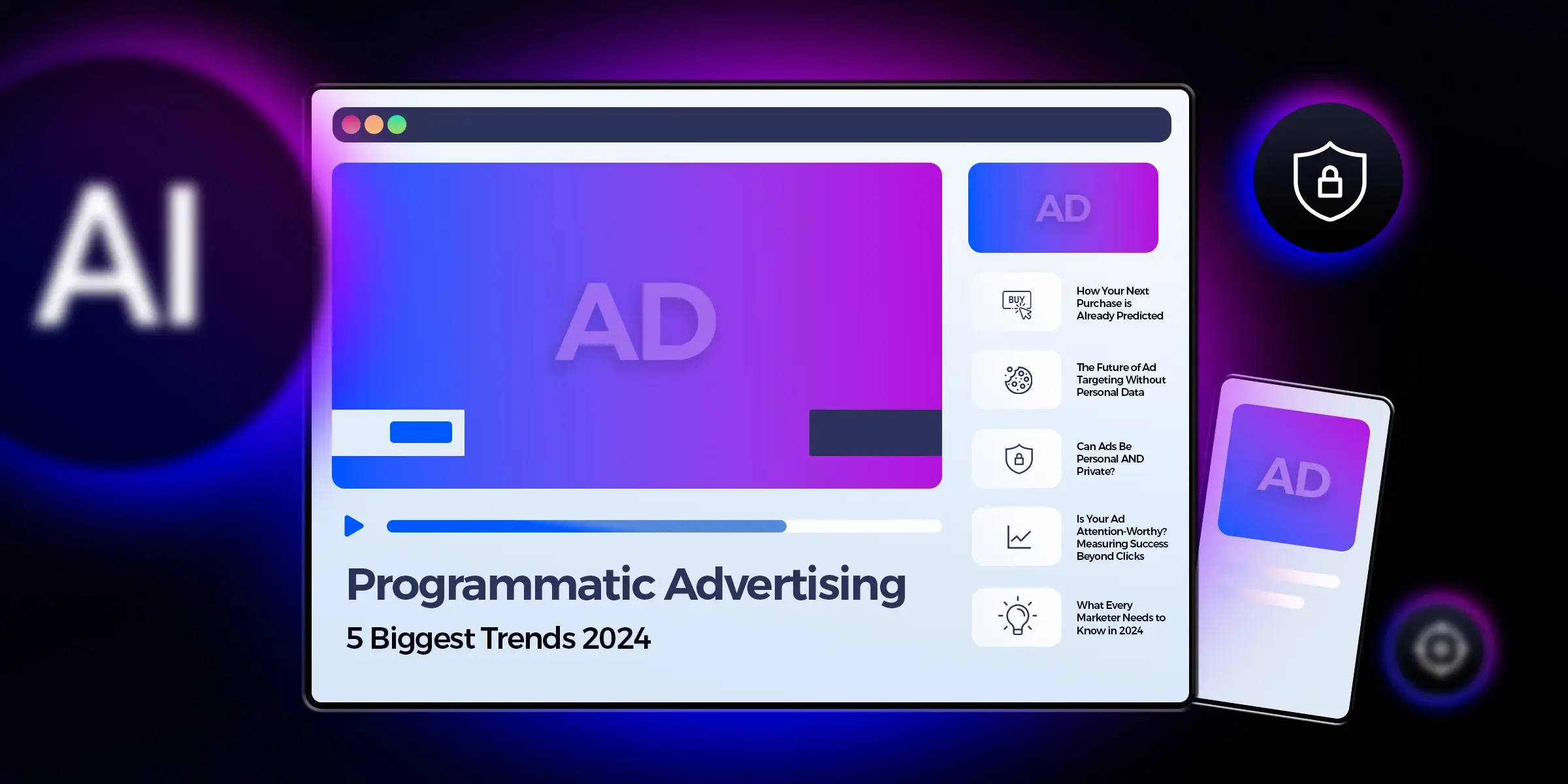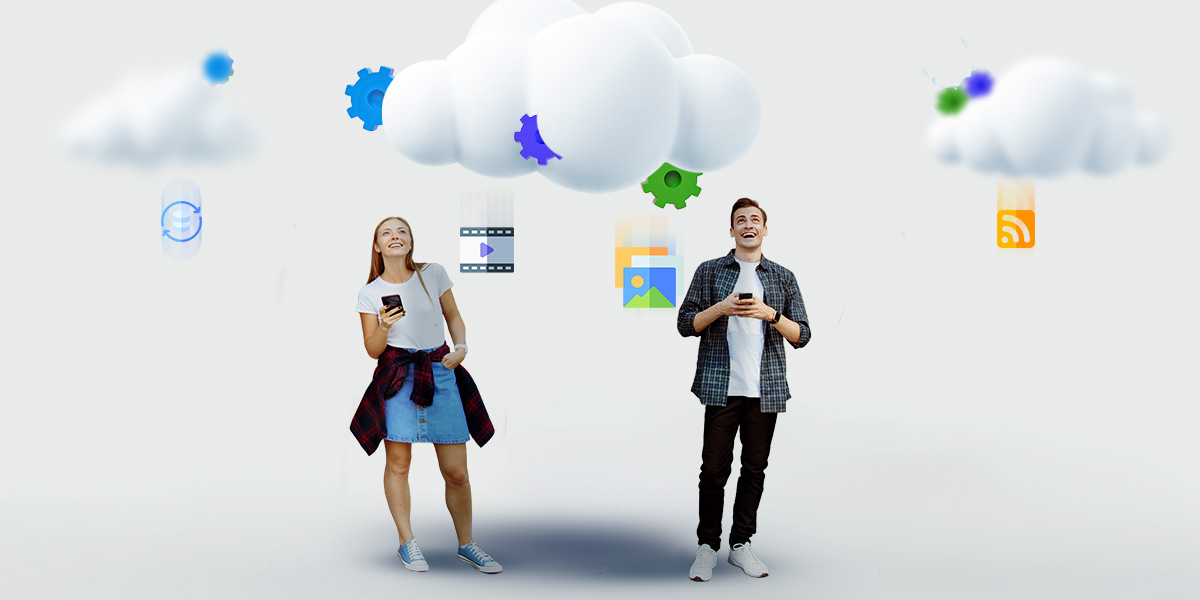
How to future-proof your programmatic strategy
You may have heard the term ‘programmatic advertising’ being used by digital marketers, but what does it actually mean?
Programmatic ads are the go-to advertising strategy for many brands. It uses sophisticated online targeting and web traffic data to target the right audience at an optimal price.
And programmatic use doesn’t look to be slowing down anytime soon. Recent findings show that by 2026, 86% of overall digital advertising revenue will come from programmatic ads.
Until now, the success of many programmatic strategies was down to the use of third-party cookies.
But as we shift towards a cookie-less world, will the power of programmatic advertising ‘crumble’? What other ways can advertisers upgrade their data infrastructure to continue reaping the benefits of programmatic ads?
This blog will explore the most relevant programmatic channels and ways to future-proof your current strategy.
What are the most relevant programmatic channels?
A programmatic strategy can use various channels depending on your end goal and content format. Here are some of the most common channels used in programmatic campaigns:
Display ads: These are typically static or dynamic ads that are placed in the header, footer or sidebar of websites you visit. Display banner ads are generally the most popular programmatic advertising channel, as historically, they have generated the best results.
Video ads: Unsurprisingly, the popularity of programmatic video advertising has sky-rocketed over the past five years. According to Insider Intelligence, this year alone, video has dominated ad spend compared to non-video ad formats.
Connected TV (CTV): A newer format predicted to rise in popularity – with US ad spend expected to increase 34.6% throughout 2022. CTV gives advertisers a singular way to reach users who wouldn’t typically watch standard linear TV and therefore fall outside of traditional media buying options.
Social ads: Programmatic advertising via social utilises data gathered from social media platforms to display ads in front of the intended user. The data decide who will see the ads, the ad format, the ideal time, and frequency caps.
Digital Out-of-Home (DOOH): This programmatic advertising leverages machine learning and data to place promotional media in out-of-home display placements. A perfect example of this was when eBay used changes in weather to advertise seasonal products in large digital displays. Find more insight on DOOH trends here.
As a brand, your programmatic strategy will likely span more than one channel. Marketers may see added benefits from merging programmatic advertising with other digital channels to gather top-of-funnel leads – which we shall explore later.
What are the current programmatic advertising challenges?
Advanced audience targeting and increased reach (at low costs) are at the core of a successful programmatic strategy. But recent industry changes have posed some new challenges, most notably:
Fewer cookies
With the depreciation of third-party cookies, marketers will lose certain personalisation capabilities. This could lead to decreased CPMs and shrinking audience sizes.
A recent study conducted by Google analysed the impact of cookie-less targeting on ad publishers and found a 52% decrease in advertising income. Although Google keeps delaying the retraction, with an increased focus on people’s privacy – the end is near.
But there are ways around this.
The solution: Using first-party data should be the starting point. This is data collected from your website. However, unlike third-party data, this is not readily available, and businesses may need to incentivise consumers to provide this data through forms/surveys. Additionally, using private marketplaces can provide access to useful first-party data.
Contextual targeting presents another solution to decreasing cookies. This is when ads are placed based on the content the person is already consuming. For instance, placing an ad for headphones on a radio station’s website. Unlike third-party data, this does not solely rely on past behaviour or intent and is a more effective form of targeting, as the user is already interested in the product or service.
Increased ad fraud
Ad fraud is another constant obstacle for digital marketers, especially considering the capital invested in campaigns. With an abundance of ad networks, how do marketers know which to prioritise?
While programmatic advertising pushes ads out to a large portion of users, ultimately, the focus should be the inventory quality – not quantity. The key to success relies on ads being shown to the right people, not the most.
Ad-fraud software solutions can provide some security in avoiding ad fraud. However, some will always slip through the net.
The solution: To counteract this issue, brands should use reputable and experienced ad networks. These might have a higher price point but will drive more ad value and returns if the ads are shown to potential consumers.
A huge benefit of programmatic campaigns is the ability to play with big data. Pairing this with a PPC campaign can help businesses grab those top-funnel leads. Many PPC campaigns mainly utilise the Google Display Ad Network (GDN). But add programmatic to the mix, and marketers can access over 80+ ad networks.
Content marketing can also help strengthen your existing programmatic advertising. Behavioural data can help you drive content that resonates with your audience, maximising conversions and CTR. Programmatic search ads can also drive through the noise and ensure your products are placed in front of the most relevant consumers.
How can you enhance programmatic strategies?
Advertisers still see the value in maintaining a programmatic strategy. In fact, studies predict a 39% increase in programmatic spend in the next 12 months, despite the challenges listed above.
Here are some ways to get ahead and transform your future programmatic strategy:
Experiment with data sources: Carefully dissecting your website visitors and incentivising them to provide rich data, or using CRM data, can be an added way to extract targeting data for effective ad placements. Additionally, investing in private marketplaces that offer first-party data can also help curb privacy changes.
Pairing with other channels: Matching the data power of programmatic to run successful programmatic search ads can help convert consumers through the marketing funnel.
Automation and machine learning: The removal of third party-cookies will ultimately lead to data gaps in the future. This is where demand-side platforms (DSPs) must fulfil the capabilities and ensure smooth performance of programmatic advertising campaigns.
New skills: Hiring the right people will be crucial. Data science skills will be the top requirement for future digital advertising roles as we shift towards machine learning and automation. Invest now to profit later.
Cookies may slowly become a thing of the past, but don’t sleep on the future. Start taking the necessary steps to prepare your future programmatic strategy today.
Contact us, and we can help fine-tune your programmatic advertising strategy to cut through the noise and put your product in front of the right consumer.
Share this article







